You can’t call yourself a gardener if you don’t have at least one hoe, right? Unless you live in an apartment and have embraced indoor gardening. But for most other green thumbers, gardening hoes are an essential tool for planting, weeding. and doing lots of other handy work in the garden. In this gardening hoes buyer’s guide, we’ll explore different types of hoes and help you choose the right one(s) for you.
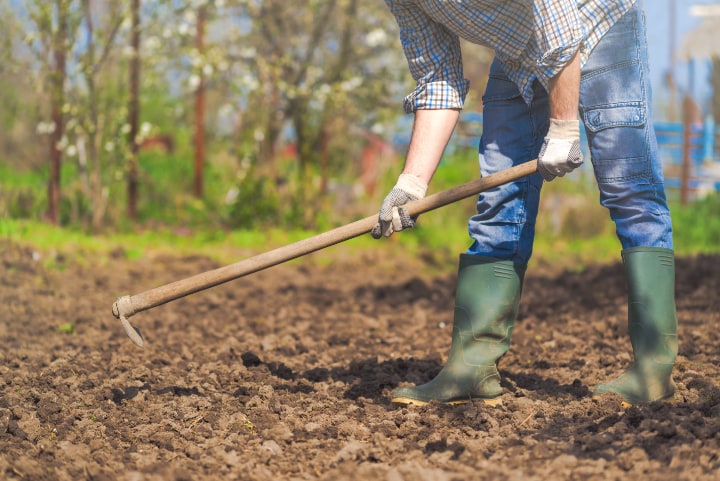
Gardening hoes are versatile tools that have been used in gardening for centuries. They haven’t changed much over the years and haven’t been supplanted by high-tech gadgets, either. At least not yet!
But that doesn’t mean any gardening hoe will do. Having the right hoe is crucial to getting your job done as a gardener, and that’s what this guide’s all about.
What Are Gardening Hoes Used For?
A gardening hoe is consists of a long shaft with an angled metal blade at the end. Gardening hoes can serve many purposes. Really, you can achieve most of your tasks in a garden with a hoe.
With them, you can weed out plants to ensure healthy growth. They can also help you shape and clear up the soil for planting new flowers, vegetables, or trees as well as for harvesting root crops.
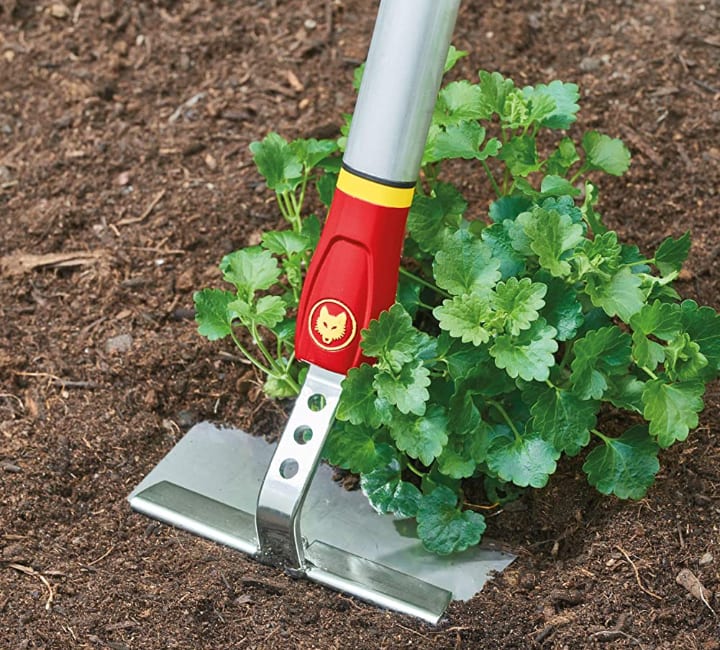
Important: Most of all, hoes can be an effective way to get rid of bothersome weeds and also to plant and care for seeds.
A hoe is very important even in small gardens. For most people with a garden or yard, it’s as significant as a spade or a rake.
Tip: With a hoe you can also kill the weed seedlings which have not yet grown above the ground. This can help make your task much easier.
Common types of gardening hoes include the paddle (or draw) gardening hoes, the long, thin Collinear (Onion) hoes, the stirrup hoes, and the Dutch gardening hoes, also referred to as Warren hoes.
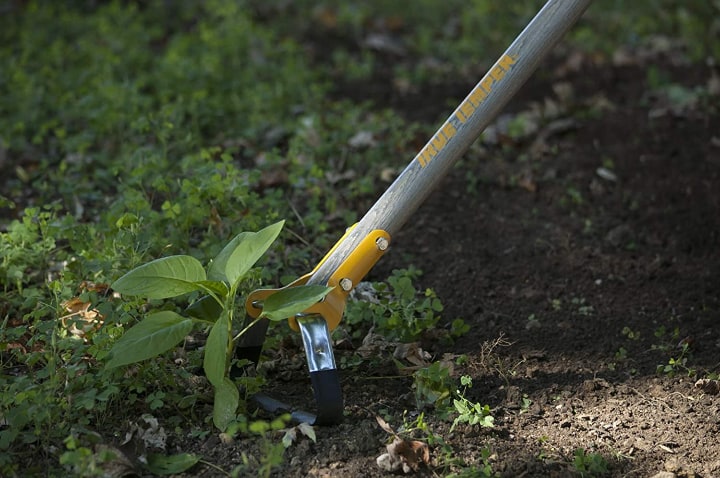
Each has a different shape and can aid with different tasks. If you’ve never handled a gardening hoe before and are unsure where to start, we recommend using a basic draw hoe at first.
Gardening Hoe Types
Gardening is a relaxing hobby. However, if you don’t have the right tools then it can become more work than it has to be.
As a gardener, you need a gardening hoe in order to accomplish essential tasks like weeding and tilling.
When it comes to gardening hoes, keep in mind that they are not created equal. There are important differences between them both in terms of their appearance and functions.
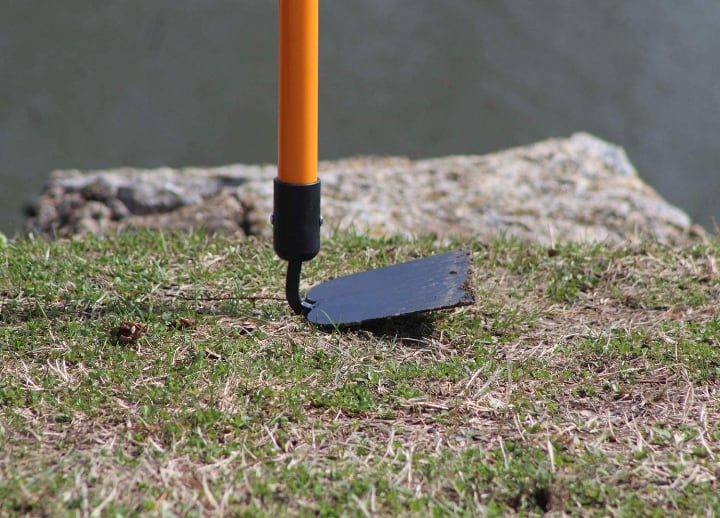
Some are multi-purpose while others can only be used just for one thing. Generally, there are two major types of gardening hoes. These are the draw hoe and the scuffle hoe.
Draw Hoes
A draw hoe is intended for shaping and furrowing. The blade of a draw hoe is angled at ninety degrees to the handle. You will chop it into the ground then drag it towards you. You can also use a draw hoe to dig the soil.
Varieties of draw hoes include the following.
Eye Hoe
The eye hoe is a common design of a draw hoe. It has a hole at the head, which you use for inserting the handle.
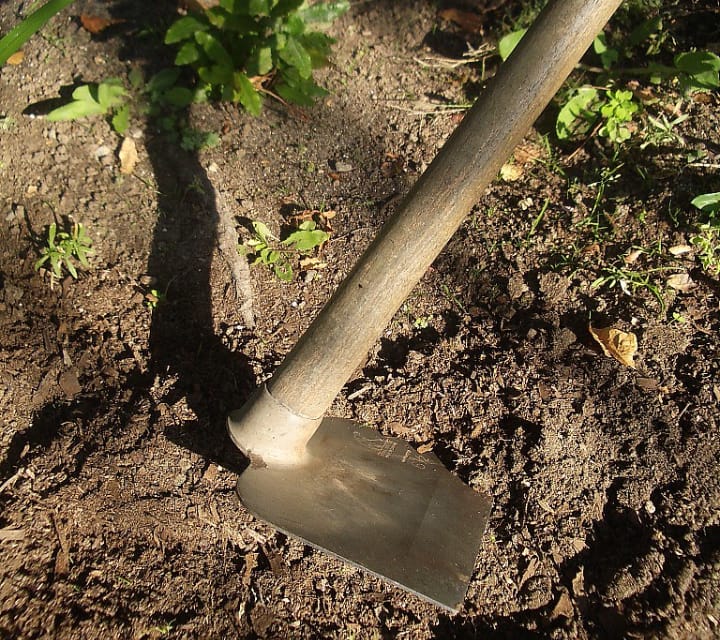
Grub Hoe (Grab Hoe)
Also called a pattern hoe, this one has a heavy and wide blade.
Ridging Hoe (Warren Hoe)
Also known as a drill hoe, this one has a triangular or heart-shaped blade. It’s useful for making trenches and furrows.
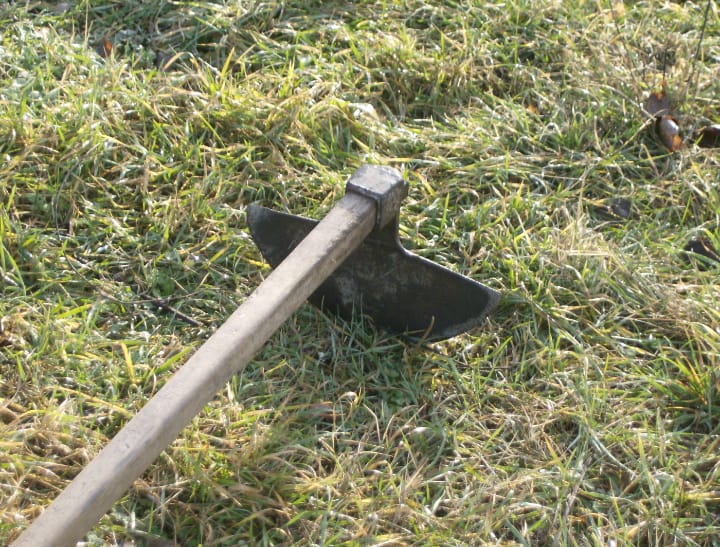
Hoedad Hoe
Hoedad or hoedag hoes are mainly used for planting trees.
Mortar Hoe
Mortar hoe has a square blade and is typically used for blending mortar and concrete.
Scuffle Hoes
A scuffle hoe is very effective in weeding since it can remove the outer layer of the soil. It comes in two varieties.
Dutch Hoe (Push Hoe)
The Dutch hoe or push hoe uses a blade that is sharp on all sides for cutting the weeds efficiently.
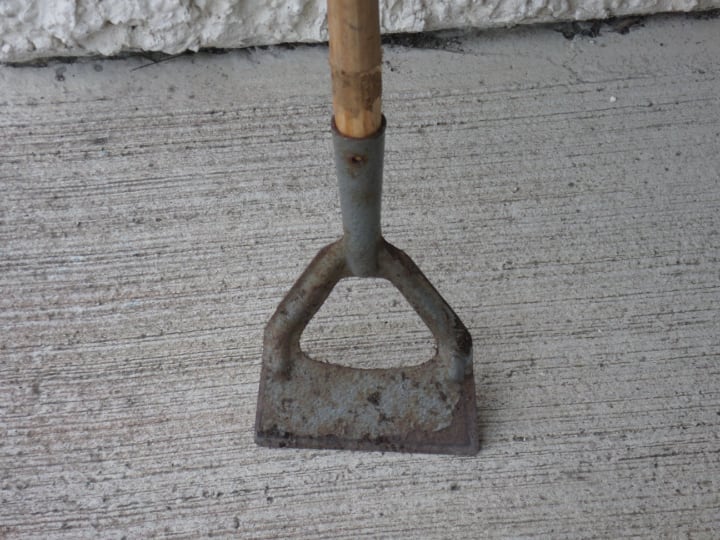
Hoop Hoe (Action Hoe)
The hoop hoe or action hoe uses a double-edged blade. It’s excellent for chopping off weeds especially in loose soil.
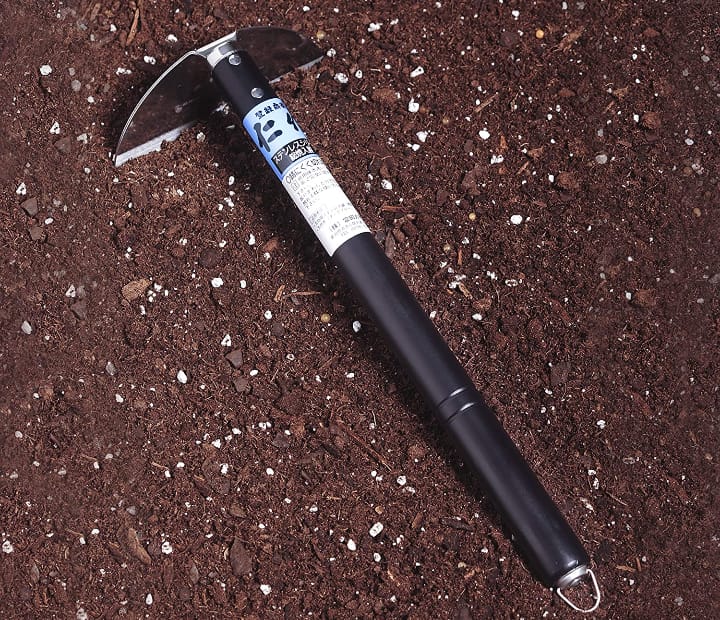
What to Look For When Buying a Hoe
When shopping for a hoe, it’s important to pay attention to the key features. These will make you choose a tool that makes your work easier.
From a distance, all hoes look more or less the same, but when you zoom in on specific features, there can be quite a lot of variation.
At the end of the day, you want a durable tool adapted to your needs. And whether you get it or not depends not only on the amount of money you pay for it, but on how carefully you choose it.
Gardening hoes are just not made equal!
Blade Material
The most significant thing to consider when purchasing a gardening hoe is its blade material. Mostly hoe blades are made of stainless steel and carbon steel.
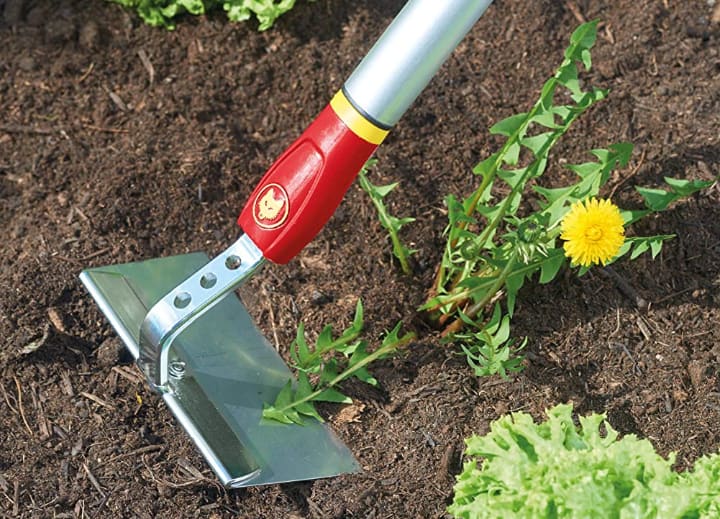
A hoe made of stainless steel has a low level of soil adherence. This means that it is capable of penetrating more on the soil. At the same time, it is also much easier to wipe after using and it will not rust.
On the other hand, a carbon steel blade is made of tougher material. It won’t warp or bend easily.
Shaft Material
Another factor to consider is the shaft material. Wooden handles can greatly absorb impacts. But they also rot if not stored properly.
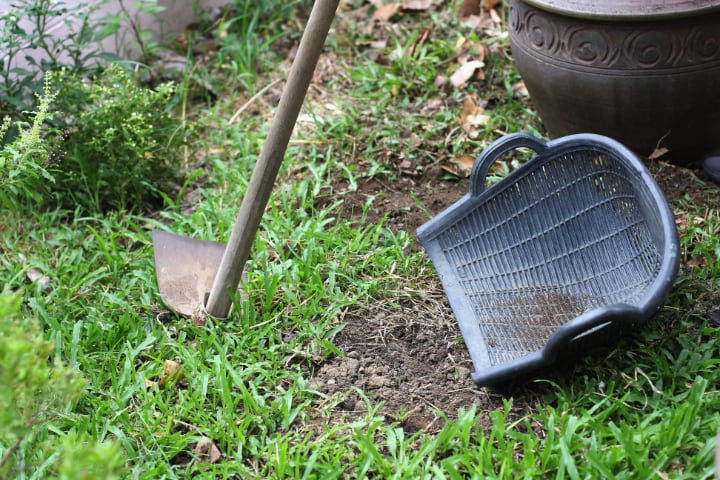
Tip: You can use boiled linseed oil to protect wooden shafts from rot.
Steel handles are heavier but they are durable and will not get damaged right away.
Handles made of fiberglass or aluminum are lighter. They can be a handy choice since they give you the chance to hoe for a longer period of time without feeling any weariness.
Regardless, there are also handles that are sold separately and which you can use with other heads for various purposes.
This can save you some money if you are buying several independently shafted tools. So, what are you waiting for?
Short Handle Versus Long Handle Gardening Hoes
In your search for the perfect gardening hoe, you will find there are multiple types out there. And by that, we don’t simply mean the four types outlined above, but also different length hoes.
You will have to decide between getting yourself a gardening hoe with a short handle, or one with a long handle, so you must know what each of them does.
Short Handle
A short handle gardening hoe is usually heavier. Originally, they were developed to dig in difficult, narrow spaces.

This is what our ancestors used to dig trenches during the war, so obviously, they’d want a sturdy tool that allows them to dig rapidly and in any place.
These were also used by migrant workers in America before being eventually outlawed in 1976 when used in an exploitative manner.
Good to know: Depending on your own height, you might find short-handled gardening hoes to be easier to use (sometimes the long handle can be cumbersome).
Long Handle
On the other hand, long handle gardening hoes are better for your posture, as they allow you to dig standing up and remove the need to be crouching all the time.
They are also lighter (because you can’t apply the same force standing up as you would sitting down). However, long handle gardening hoes may be more difficult to use, particularly because they’re light.
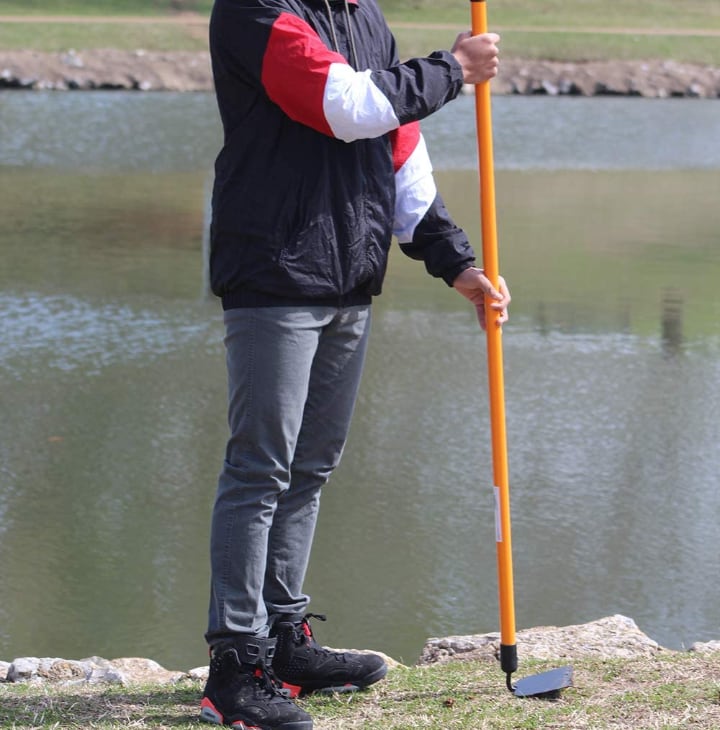
So in the end, which one you choose depends heavily on the type of work you want to do with it as well as your own preferences.
As your gardening experience grows, you will probably want to buy different hoes, to make different jobs easier.
Tip: Have at least one short handle and one long handle hoe at your disposal.
How to Use a Gardening Hoe
It’s best to till before the weeds start to grow on the surface. Weed seedlings are always developing beneath the surface. If you can hoe regularly, you can kill these weed seedlings.
Tip: Hoeing is best when the soil is dry. Once the weeds are chopped off with the hoe, it will be harder for them to reroot.
Here’s a practical demonstration.
Here are some of the other uses of gardening hoes.
Sweeping
For this, you will need a flattened blade tool, like a Warren or a Dutch hoe.
You can sweep the ground with gentle, flowing movements (just as you would when sweeping with a broom). This will flatten the earth and make it easier to work with.
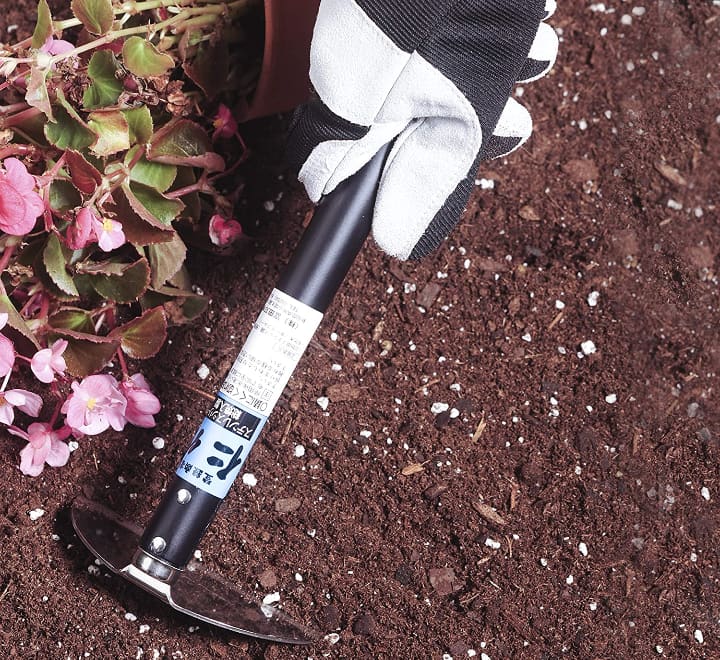
Good to know: Sweeping also serves to sever the tops of weeds and keep your garden healthy.
Turning
The great thing about gardening hoes is that they can be used in any position, and still have a practical use for your garden.
When you turn a gardening hoe around (so with the opposite side facing up) and push it firmly into the ground, you are effectively digging a trench, which can then be used to plant seeds.
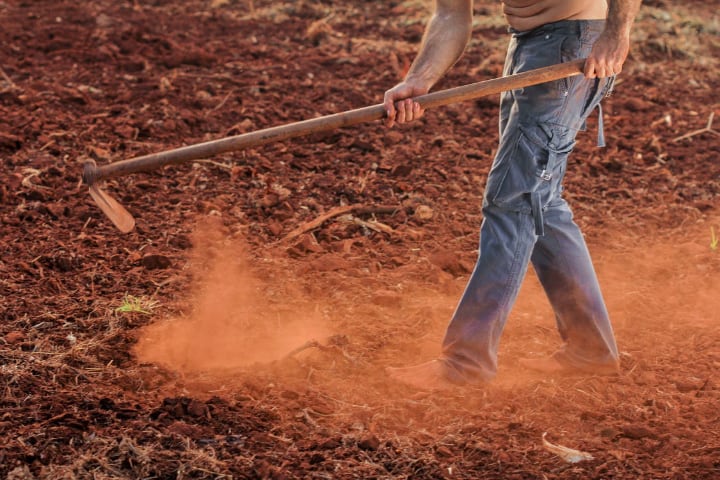
Tip: Be careful though, as many plants and flowers require a certain distance from one another to grow properly!
Slicing
Anyone who’s tried to keep a garden knows that one of the biggest challenges a gardener will face is the appearance of pesky weeds.
And while sweeping is a good way to get rid of weeds, slicing is another, somewhat more versatile method.
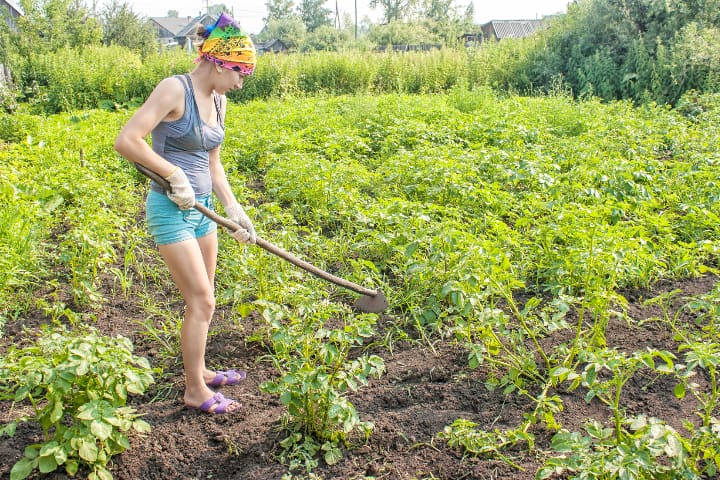
Tip: The great side with slicing is you can adapt and use it on mounds and slopes, as well as flat ground.
The way to slice is to turn the hoe inwards, with the tip toward the earth, and hold it at a slight angle, dragging it slowly but firmly towards you. For this, a basic gardening hoe (or a draw hoe) will do just fine.
Coverage
Another excellent use of a gardening hoe is to pile on the soil, once you’ve planted the seeds. See, many plants require quite a lot of soil on top of them, to grow properly. Sweet potatoes for example.
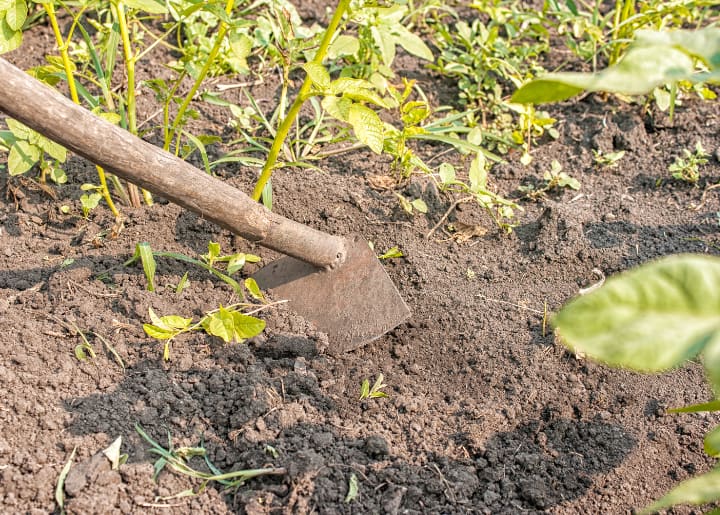
And the easiest way to move that soil is with a hoe.
Tip: When handling a gardening hoe, you will want to equip yourself with a good deal of patience. If you’re not used to it, it can seem challenging.
One thing you will want to get yourself, regardless of the type of gardening hoe you are using, is a special file. This will let you sharpen your tools in-between uses, and make your work much easier overall.
As we’ve seen, a great deal of slicing and cutting is expected of gardening hoes, so yours will need to be pretty sharp.
Otherwise, you’ll spend double the time in the garden. And you don’t want that, do you?
Gardening Hoes Questions and Answers for Gardeners
Here are some of the most common gardening hoes questions we keep hearing. Some of them are quite obvious, but since people keep asking them, we thought we might as well get some answers ready.
What are the different types of hoes?
There are four main types of gardening hoes: the Warren/Dutch, with a sharp, often triangular spade; the Collinear/Onion, long and thin, used for getting into narrow spaces; the Paddle/Draw which you can use for all basic gardening tasks, from planting to weeding; and the Stirrup/Loop, with an attachment that looks a little like a saddle.
What are garden hoes used for?
Gardening hoes are used to get rid of weeds, clean and work the soil, and plant seeds.
What is the best garden hoe?
There isn’t a single best gardening hoe, but rather the right type of hoe, depending on the task at hand.
Is a hoe a gardening tool?
Of course, since we mainly use it to cultivate and care for our garden. Learn more about what you can use a gardening hoe for.
Try Not to Break Your Back, Will You?
Know the differences between the gardening hoes and choose the one that’s right for you. Your back will be grateful!
A gardening hoe is very much a necessary tool in your garden, as it will make your job easier.
As we’ve seen, the right gardening hoe can help you keep your soil in tip-top shape and get rid of hose awful weeds that risk destroying your garden.
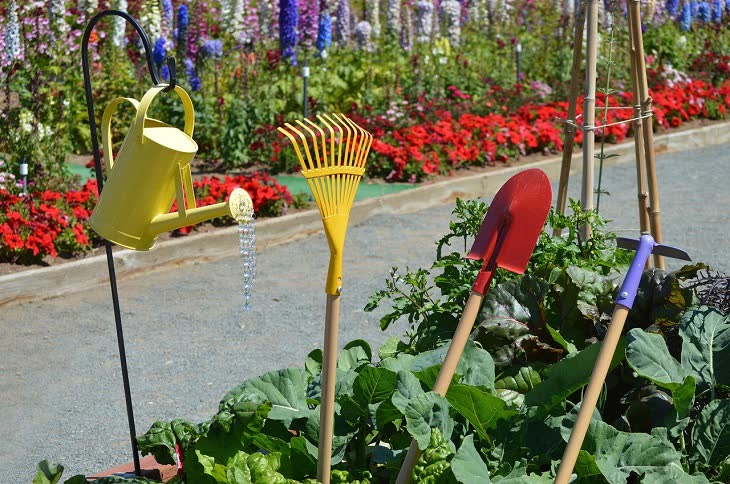
So what are you waiting for? It’s time for you to figure out what you want to do with your gardening hoe, and go get the right tool for you!
Start chopping those weeds then use a wheelbarrow to gather the debris. Because remember: gardening is not only a relaxing hobby but it’s also good for your health.
We hope this guide helped you understand hoes (it wasn’t rocket science, was it?) and find the right hoe for you!
If you found this guide useful, share it with anyone you think may need it. We appreciate your support!

Leave a Reply